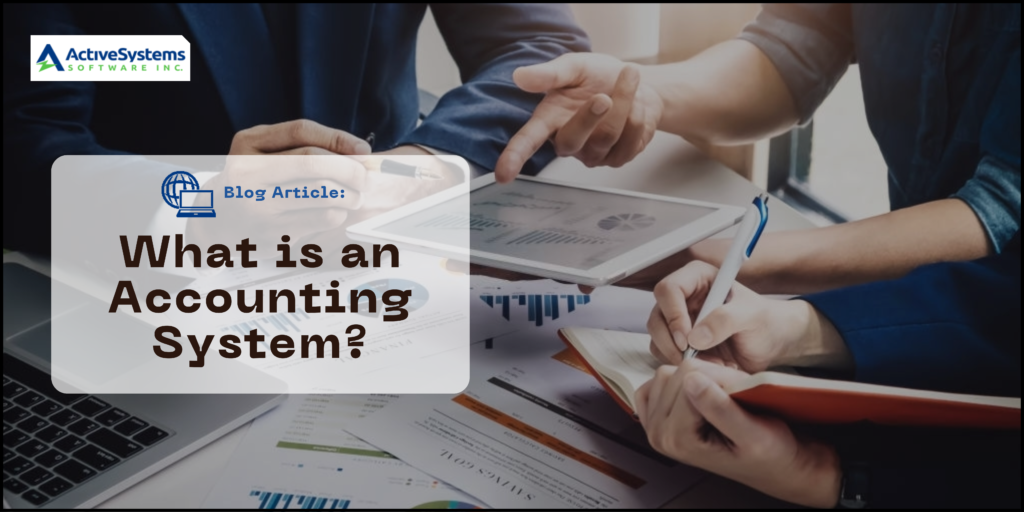
Accounting System is broadly classified into two categories – single entry and double entry. No matter which version a firm uses, it is a significant tool to track the performance of a business and accordingly help organizations plan different strategies for effective results.
How Accounting System Works?
An accounting system helps organizations maintain their accounts and record all the incoming and outgoing resources. As a result, they can track how much is the revenue and what’s being spending. In short, when companies use an organized system of accounting, it enables them to track their performance from a financial point of view.
When companies record transactions properly, the documents prepared are accurate and they act as a ready reference for businesses whenever they need to retrieve or check any particular transaction for a particular period. This account-keeping system, however, includes details about purchases, sales, and liabilities recorded as expenses, income and expenses, and funding and accounts payable.
As the data set is crystal clear, the details can be well represented via graphs and charts, providing a better comparative structure for businesses to assess. As a result, decision-making is more efficient and accurate.
Whenever a transaction, such as sales, purchase, expense, etc., occurs, it is recorded through proper journals, becoming the first entry in the system. As companies use the computerized accounting systems nowadays, the automated mechanism makes the respective entries in the correct account’s ledger whenever users post a journal.
At the end of the period, however, it calculates the balance of each ledger and prepares different financial statements like balance sheets, cash flows, etc. Therefore, generating reports to refer to becomes easier, while assisting the management to make important financial decisions.
Type of Accounting System
Furthermore, the accounting system that companies use to record the transactions and prepare financial documents for financial reporting over a period can be classified into two broad categories – single entry system and double entry system.
Single Entry System
It is one that records only expense or income. This is the traditional form of maintaining financial records. It is called a single entry accounting system as the entries are made only once to simultaneously reflect the expense and income. Thus, small organizations prefer this system as they do not deal with huge inflow or outflow of resources. However, due to the incomplete and unclear data, the tax authorities do not recognize this kind of recordkeeping for financial reporting.
Double Entry System.
On the contrary, users consider the double entry accounting system as more accurate, and the tax authorities recognize them. In the process, whenever a transaction occurs, it affects two different accounts at a time. This means that when there is an inflow, it is both income and asset, while if there is an outflow, it is both expense and liability. Here, the data is crystal clear. Hence, the preparation of graphs and charts is easier for reliable financial reporting.
Accounting System Components
The accounting system is of no use if users do not have the components that help facilitate the process. Earlier, users operated the entire system manually. Hence, accounting executives and management had to check large registers, accounting books, etc., before making minor/major business decisions.
The major components of the conventional method are expenses, funding, invoices, etc. Thus, from the cash flows to preparing the balance sheet and other financial documents, this system utilizes the information gathered in various categories, constituting its components. These includes: accounts payable, accounts receivable, billings, fixed assets, payroll, and inventory.
Today, when everything is computerized and automated, the number of components has increased. Of course, the data required remains the same, but there is a software-driven infrastructure that supports the whole process. These include source documents, input devices, storage capacity, processors, and output devices.
Advantages & Disadvantages of Accounting System
As accounting systems are becoming computerized, things are smoother and more effective for businesses. However, these systems are not devoid of disadvantages. So, let us have a quick look at the pros and cons of the online accounting system:
Pros
- Saves time and money
- Reduces errors
- Provides a better view of the financial data
- Improves management of cash flows
- Makes filing tax returns easier
Cons
- Computerized system has some challenges
- Change in programs required to prevent bugs and programming errors
—
We Provide True Integrated Business Solutions
With ActiveSystems, we make sure that not only our products work but we ensure that we understand your needs and deliver solutions that will make your business process more efficient, effective, and secured, and that you are satisfied with the results.

Read more of our blogs for further information.
Source(s): https://www.wallstreetmojo.com/accounting-system/
“No copyright infringement is intended”

